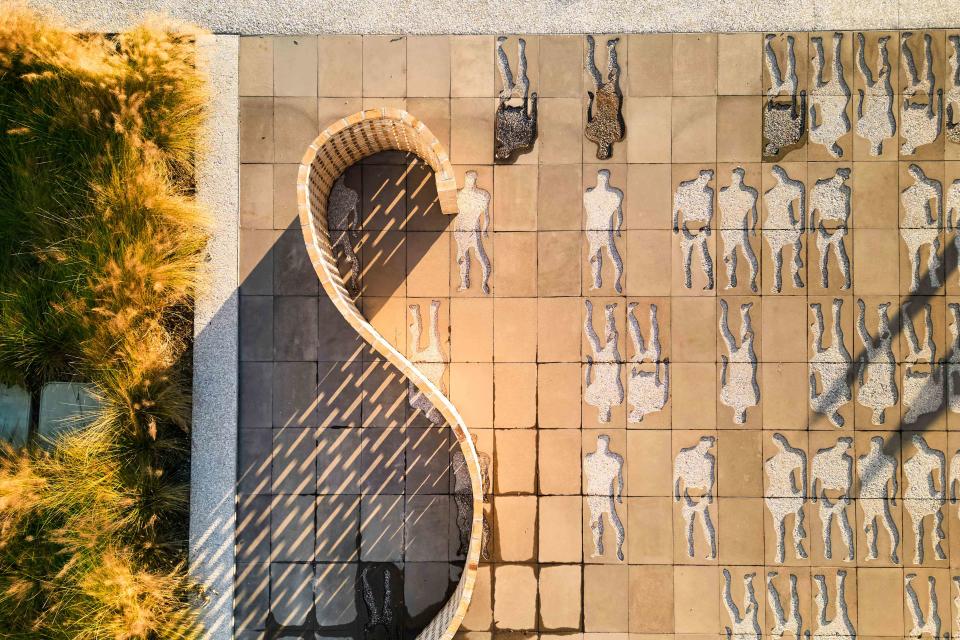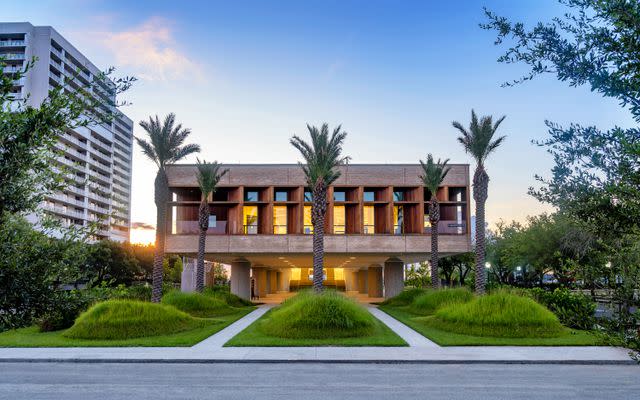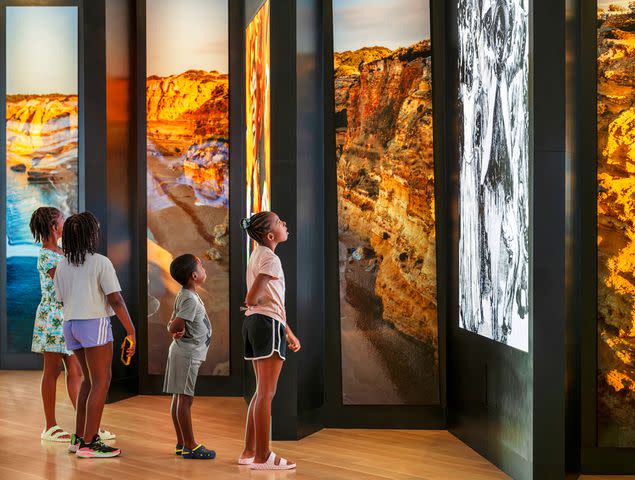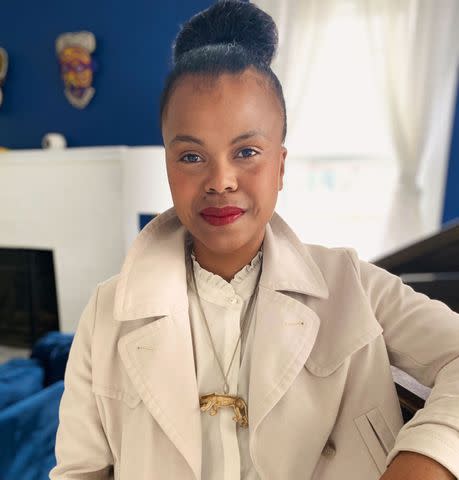The South's Best New Museum Is The International African American Museum
The Charleston museum aims to tell the full story of the African American experience and to help visitors trace their ancestors' footsteps.

Peter Frank Edwards
The garden features Tide Tribute, a work by Hood Design Studio. Each figure represents an enslaved person who was brought to Charleston Harbor.The American Journeys exhibit at the International African American Museum (IAAM) in Charleston, South Carolina, which is the South's Best city for 2024, starts with a white cutout of Africa in front of muted photos of Black American heroes. The word “we” stretches the width of the continent in capital letters, and the statement continues on the floor below: “begin here.”
The IAAM opened in June 2023 on Gadsden’s Wharf, the former port on Charleston’s riverfront where nearly half of the enslaved Africans brought to this country first landed. The museum centers around the stories of these people and their descendants as well as the broader narratives of Black citizens across the United States.
Related: The South's Best 2024

Sahar Coston-Hardy/Esto
The building is on Gadsden's Wharf, reclaiming the location and making it an epicenter of Black voices and stories.I began researching my family’s lineage about seven years ago, when I was pregnant with my son. I felt a strong desire to share my ancestry with him but realized I only knew about my living relatives. I used the last of my fleeting free time before he was born to sort through data in census records and on genealogy websites.
Recently, I took my son to the IAAM because I want him to engage with the full, unfiltered African American story at an early age, whether we’re finding out about our own family or the wider Black American experience. The galleries are full of interactive panels and videos that hold the attention of people of all ages and learning styles.

Sahar Coston-Hardy/Esto
Visitors of all ages are welcome.“The African American journey meets at the intersection of incredible trauma and joy,” says Malika N. Pryor, IAAM’s chief learning and engagement officer. “That can be a little tougher for a young person to process. So having a grownup (whether that’s their grandpa, mom, or another mentor) there can help them as they walk through that. I think that’s where the intergenerational component really comes into play.”

COURTESY IAAM
Halfway through the American Journeys exhibit, we stepped into an airy rotunda called the Center for Family History. Pictures of the Obamas, Catherine Braxton and Rebecca Campbell (sisters who had free and enslaved relatives at Drayton Hall, a former plantation on the Ashley River), and Darius Brown (a genealogist at the center) are displayed on the walls the way a matriarch places her family photos throughout her living room. My son touched the screen of an interactive kiosk, which invited him to delve into his own history.
"“Don’t believe the myth that doing enslaved genealogy is impossible. It’s difficult; it’s challenging. Sometimes, it can be painful, but it’s not impossible.” —BRIAN SHEFFEY"
More than just an exhibit, the center hosts in-person classes as well as virtual one-on-one sessions to help people of color from around the country further their family knowledge. “I’ve really gotten into African American genealogy to encourage people of African descent to start researching their history and to come away feeling empowered to do that,” says Brian Sheffey, the director of the center. “Don’t believe the myth that doing enslaved genealogy is impossible. It’s difficult; it’s challenging. Sometimes, it can be painful, but it’s not impossible.”
One common roadblock for African American genealogy is called the “1870 brick wall.” “From the present day back until about then, everyone has the same kind of records,” explains Sheffey. “But for those of African descent, looking for anything from earlier than 1870 can go one of two ways. You have free people of color, whom you can research much like you would someone of White ancestry. And then you have the enslaved side, which has a different type of genealogy. You have to deal with other records.”
I, too, stumbled near the 1870 brick wall. I knew that my great-great-great-grandfather Henry Turner was born enslaved and that he served in the 53rd Regiment of the United States Colored Infantry during the Civil War. After exhausting online databases, I wasn’t sure where else to look. Sheffey recommended that I request his pension file from the National Archives and Records Administration in Washington, D.C., or St. Louis, Missouri. These documents can give biographical information, including where someone lived, a physical description, and even who enslaved them. Before my visit to the center, I didn’t know this type of record existed.
The museum has ambitious goals to help Black families explore their origins, much in the way that Sheffey assisted me. According to Pryor, they intend to digitize the pertinent records to make pre-1870 research more accessible. Their loftiest plan is to gain access to slave ship logs, many of which are housed in the United Kingdom and the Caribbean. Having that information would allow more people to discover which countries their ancestors originally came from. What makes the Center for Family History unique, as an incubator within a historical museum, is that it challenges museum guests to think of genealogy beyond its value to one person or lineage. It reminds us that our collective histories form the foundation of the African American story—an integral part of the American journey.
IAAM is open Tuesday through Sunday. Timed-entry tickets are available online; the museum recommends purchasing them in advance.
For more Southern Living news, make sure to sign up for our newsletter!
Read the original article on Southern Living.

